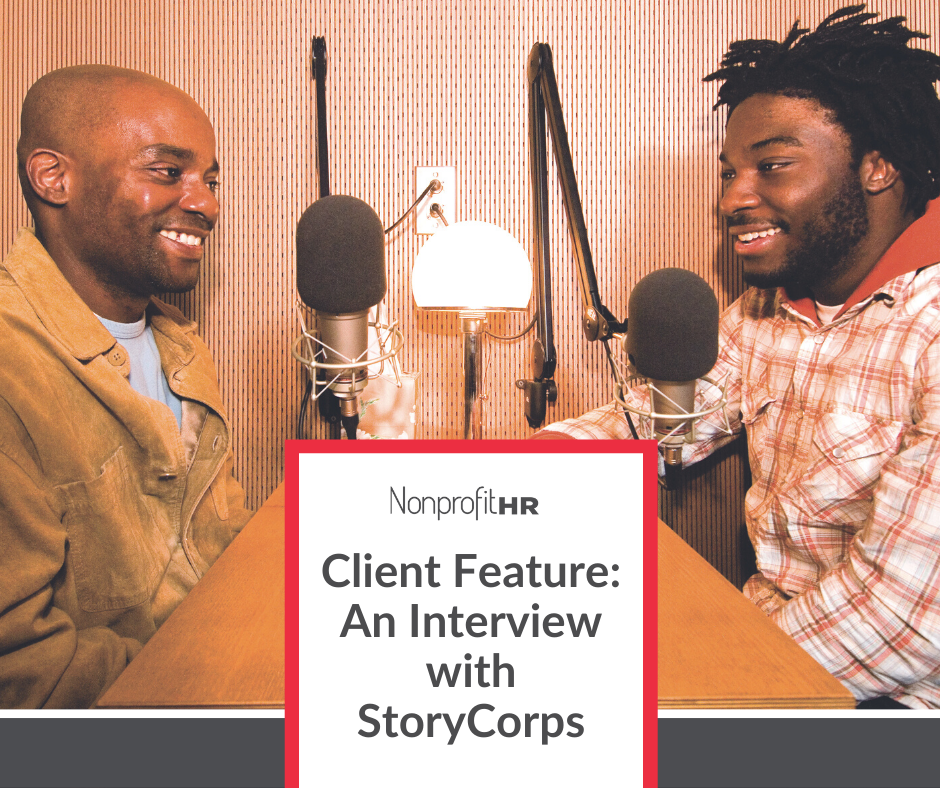WTOP: 5 ways nonprofits can…
Client Demographics
Nonprofit HR Practice Area: Search
Location: Washington, D.C.
Sector: Nonprofit
Mission Types: Community Development; Civil Rights; Human Rights; Children, Youth & Families
Staff Size: Varied
Annual Budget: Varied
Engagement Duration: Varied
Type of Engagement: Offboarding
Engagement ScenarioMultiple mission-driven organizations have engaged Nonprofit HR’s Search team to deliver a comprehensive offboarding experience, including coaching, career support, resume reviews, and strategies for staying connected as future advocates and potential rehires. This case study highlights how these tailored solutions helped organizations navigate employee transitions while preserving morale, protecting their brand, and fostering long-term connections with alumni. |
 |
Engagement Details
These organizations faced several challenges due to the absence of a structured offboarding process. Departing employees left without support, resume reviewing, career guidance or engagement opportunities, creating a missed chance to positively influence their departure experience and prepare them for their next steps. This lack of structure also posed risks to the organization’s employer brand, as dissatisfied former employees were more likely to leave negative reviews, potentially deterring future talent.
Internally, the absence of clear exit protocols contributed to frustration among remaining staff, impacting morale and workplace culture. Additionally, there was an opportunity to implement systems to stay connected with former employees, such as engaging alumni as brand ambassadors or future rehires.
To address these gaps, the organization engaged our Search team to develop a thoughtful offboarding strategy that prioritized employee support while protecting the organization’s reputation and culture.
Considerations
- Emotional Sensitivity: Since most offboarding cases involve involuntary terminations, employees are often at different emotional stages — shock, frustration, grief or uncertainty about their future. Navigating these conversations with empathy while ensuring a structured and supportive transition is critical.
- Seniority & Organizational Impact: Many of the affected roles are unique to the organization or involve senior, long-tenured employees. This makes transitions more complex, as their departure may leave significant institutional knowledge gaps, requiring a thoughtful knowledge transfer strategy.
- Maintaining Morale & Team Stability: Remaining employees may experience anxiety or lowered morale when seeing colleagues, especially long-term or senior staff, leave. A well-executed offboarding process must help mitigate uncertainty and reinforce confidence in the organization’s leadership and future.
- Reputation Management & Brand Protection: Managing the risk of negative external reviews, public perception, and internal sentiment is a challenge. The offboarding experience must be handled carefully to ensure departing employees feel respected and supported, reducing potential reputational damage.
- Legal & Compliance Considerations: Each termination carries legal and compliance requirements, including final pay, benefits, non-disclosure agreements, and security access removal. Ensuring every step is followed correctly is essential to minimize risk.
- Time & Resource Constraints: Providing personalized support, coaching and resume reviews for each departing employee requires dedicated resources.This adds pressure to balance offboarding with daily operations.
Solutions
To support departing employees, the organizations introduced one-on-one coaching sessions, resume reviews, and job search guidance to help individuals navigate their next steps with confidence. An alumni engagement strategy was also developed to maintain positive connections with former staff, positioning them as a pipeline for future hiring needs and brand advocates. Structured exit interviews were conducted to gather insights for improving workplace culture, while a carefully designed offboarding experience helped protect the employer brand by ensuring employees departed on good terms. Compliance with exit protocols, security measures, and clear communication strategies were also implemented to minimize legal and operational risks.
As a result, our client organizations are now equipped to leverage positive offboarding experiences to strengthen their reputation, reduce negative reviews and maintain strong alumni relationships.Metrics such as feedback scores, online reviews and rehire rates will help the organization track the success of its offboarding efforts and identify areas for continued improvement. Insights from exit interviews will also guide ongoing improvements to employee experience and workplace culture. This overall approach underscores how critical an offboarding strategy is to maintaining a positive, engaged workforce, ultimately driving sustainable impact for the mission.

























